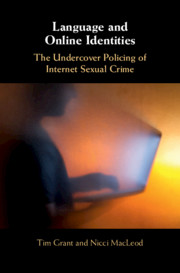Book contents
- Language and Online Identities
- Language and Online Identities
- Copyright page
- Dedication
- Contents
- Figures
- Tables
- Preface
- Acknowledgements
- Table of Legislation
- Table of Cases
- Chapter 1 Introduction
- Chapter 2 Data and Methods
- Chapter 3 Experimental Results
- Chapter 4 Training Identity Assumption
- Chapter 5 Resources and Constraints in Abuse Identity Performance
- Chapter 6 Contexts for Linguistic Investigative Advice
- Chapter 7 Implications and Future Directions
- References
- Index
- References
References
Published online by Cambridge University Press: 10 February 2020
- Language and Online Identities
- Language and Online Identities
- Copyright page
- Dedication
- Contents
- Figures
- Tables
- Preface
- Acknowledgements
- Table of Legislation
- Table of Cases
- Chapter 1 Introduction
- Chapter 2 Data and Methods
- Chapter 3 Experimental Results
- Chapter 4 Training Identity Assumption
- Chapter 5 Resources and Constraints in Abuse Identity Performance
- Chapter 6 Contexts for Linguistic Investigative Advice
- Chapter 7 Implications and Future Directions
- References
- Index
- References
Summary

- Type
- Chapter
- Information
- Language and Online IdentitiesThe Undercover Policing of Internet Sexual Crime, pp. 181 - 192Publisher: Cambridge University PressPrint publication year: 2020

